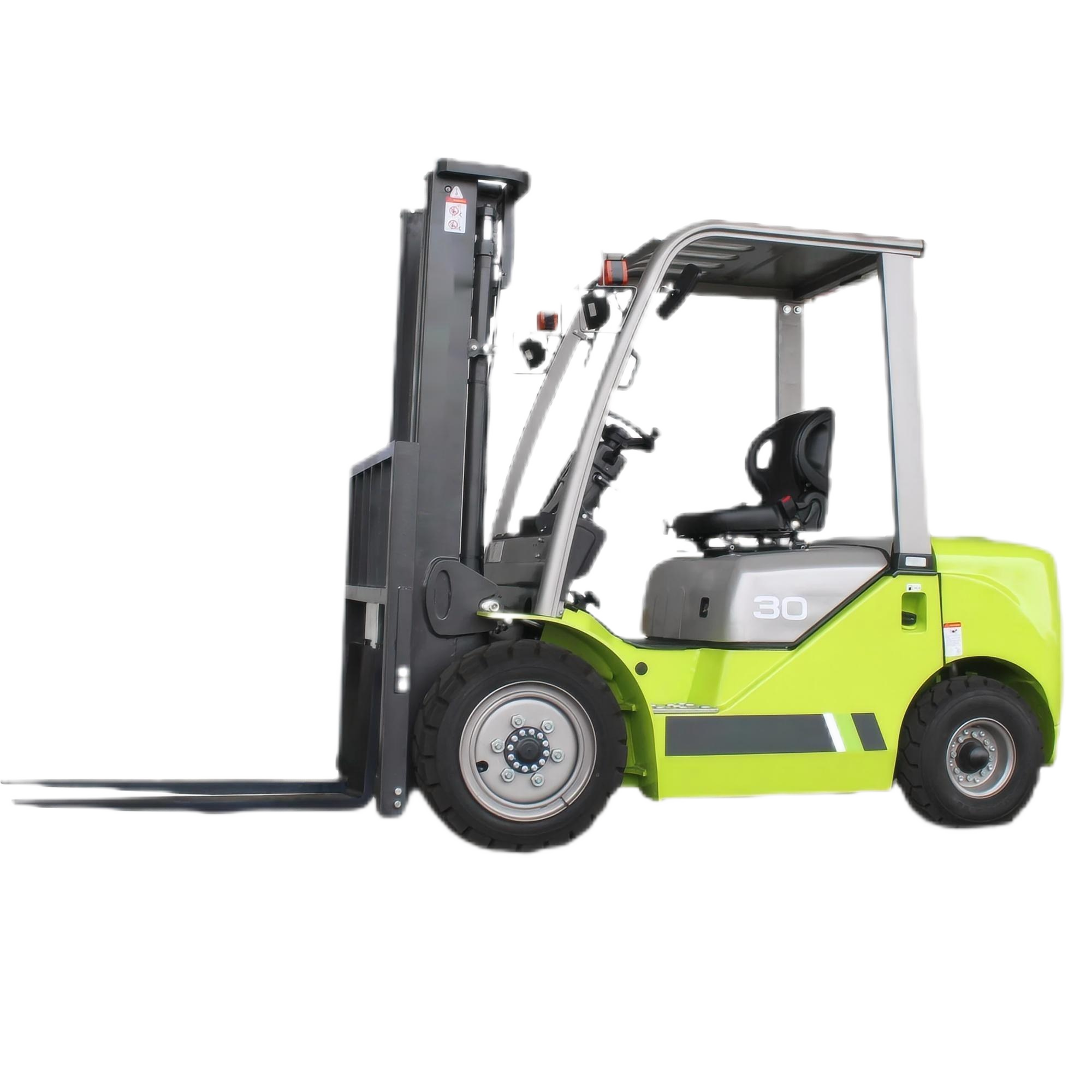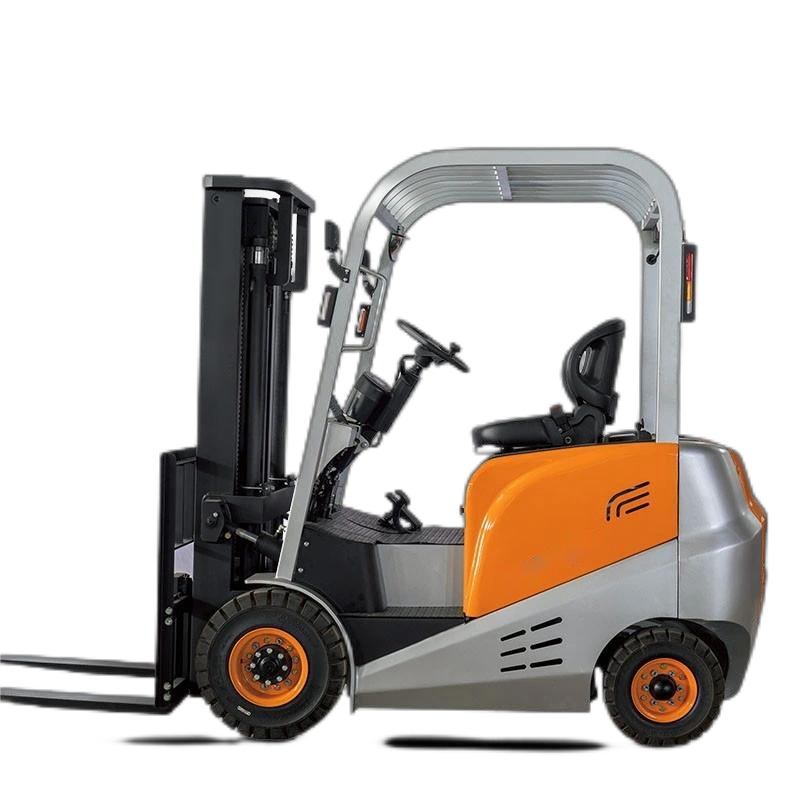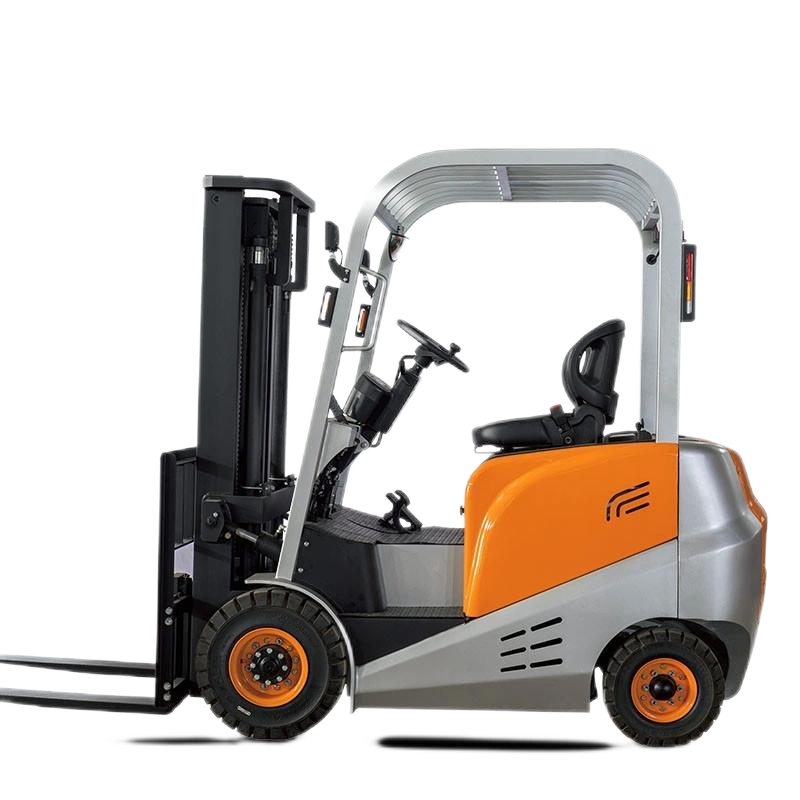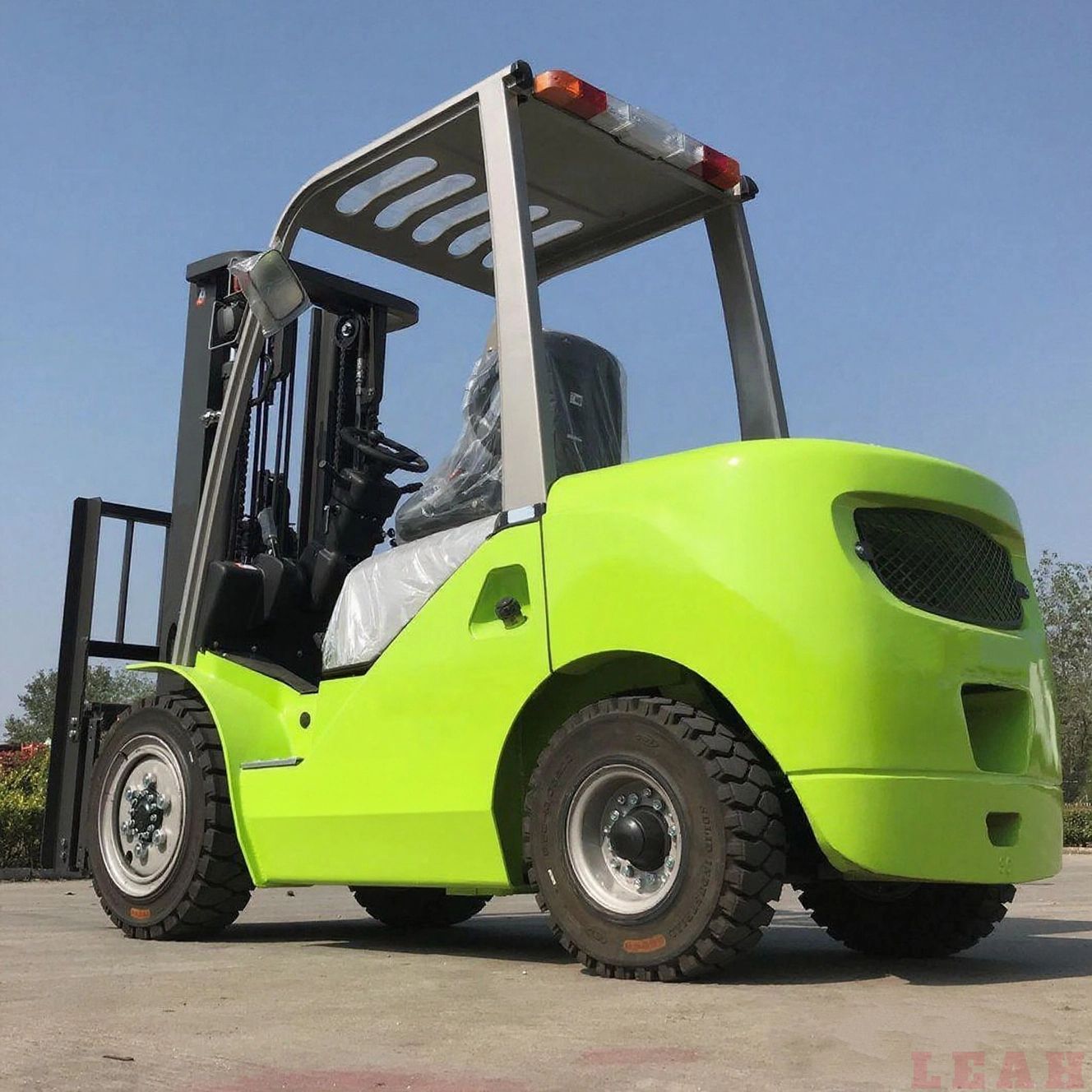As a material handling equipment with moderate load-carrying capacity, environmental friendliness and high efficiency, 3-ton electric forklifts are highly focused on material handling needs characterized by "indoor-oriented, short-to-medium distance, and medium load". Meanwhile, they also cater to some low-intensity outdoor operations, and are widely used in various fields such as industrial production, logistics and warehousing, and commercial circulation. The following is a detailed description of their core application scenarios and the reasons for scenario adaptation:

I. Classification of Core Application Scenarios
1. Manufacturing Industry: The "Material Circulation Hub" in the Production Process
The manufacturing industry is one of the core application scenarios for 3-ton electric forklifts, especially suitable for industries that require a clean and low-noise production environment. They are mainly used for material connection throughout the entire production process:
- Inter-process Transfer in Workshops: For example, in auto parts factories (transferring engine blocks, chassis components, etc., with a single weight usually ranging from 1 to 3 tons), machinery processing plants (handling metal blanks and finished parts processed by machine tools), and electronic equipment factories (transferring large equipment casings and semi-finished modules), 3-ton electric forklifts can move flexibly in workshop aisles to connect processes such as stamping, assembly and inspection. This avoids the problem that exhaust pollution from fuel-powered forklifts affects product precision (e.g., electronic components are sensitive to dust, and metal parts are vulnerable to oil contamination).
- Temporary Storage and Loading/Unloading of Raw Materials/Finished Products: In the raw material warehouse of a factory, they unload ton-bagged chemical raw materials and metal plates (such as steel coils within 3 tons) from trucks to shelves. In the finished product warehouse, they transfer assembled medium-sized equipment (such as small machine tools and industrial ovens) from the production line to the temporary storage area, or load them for shipment.
- Adaptation Advantages: The 3-ton load-carrying capacity meets the "medium load per batch" demand of most manufacturing industries. The electric drive produces no exhaust gas and has a noise level below 70 decibels, which complies with the requirements for environmental protection and worker comfort in workshops. In addition, with a small turning radius (usually 2.5-3.2 meters), it is suitable for narrow aisles in workshops.
2. Logistics and Warehousing Industry: The "Efficient Handling Tool" for Warehouse Management
In scenarios such as e-commerce warehouses, third-party logistics (3PL) and cold chain warehouses, 3-ton electric forklifts are the main equipment for "shelf access and in-warehouse turnover", especially suitable for high-rise shelf storage systems (usually 5-12 meters high):
- High-Rise Shelf Access: Equipped with a 3-6 meter mast, 3-ton electric forklifts can realize the access of materials on high-rise shelves (e.g., above 3 layers) in the warehouse. For instance, during peak e-commerce promotion periods, they transfer whole pallets of home appliances (such as washing machines and refrigerators, with a single pallet weight of 2-3 tons) and boxed daily necessities, replacing manual labor or stackers to improve access efficiency (capable of completing 15-20 loading/unloading operations per hour).
- In-Warehouse Sorting and Turnover: In large-scale warehousing centers (such as logistics parks with an area of over 10,000 square meters), they transfer goods from the receiving area to the sorting area, from the sorting area to the shipping area, or in the "goods-to-person" picking mode, transfer whole pallets of goods to picking workstations. They are suitable for the high-frequency and short-distance (usually 10-50 meters) handling needs of warehouses.
- Adaptation to Cold Chain Warehouses: Some 3-ton electric forklifts are equipped with "low-temperature configurations" (such as batteries resistant to -25°C and low-temperature seals), which can be used in food cold chains (e.g., transferring whole pallets of frozen meat and quick-frozen products in frozen food warehouses) and pharmaceutical cold chains (e.g., transferring refrigerated boxes in vaccine warehouses). This avoids the problems of fuel-powered forklifts having difficulty starting at low temperatures and their exhaust polluting the cold chain environment.
3. Commercial Circulation: Terminal Distribution and Retail Warehousing
In the commercial field, 3-ton electric forklifts are mainly used in "urban distribution centers" and "large retail warehouses", focusing on "centralized material handling before the last mile":
- Urban Distribution Centers (RDC): For example, in regional distribution centers of supermarket chains, they unload rice, flour, oil, alcohol and beverages (with a single pallet weight of 1.5-3 tons) transported by trucks to the warehouse, and then sort and transfer them to distribution vehicles in different regions. They are suitable for the "multi-batch and fast turnover" characteristics of distribution centers (with a daily turnover of 10-20 pallets of goods).
- Large Retail Warehouses (e.g., Costco, Sam's Club): In the warehouse area behind the store, they transfer whole pallets of home appliances, furniture and large-packaged daily necessities from the warehouse to the sales area for replenishment, or transfer unsalable products to the temporary storage area in the return area. Since most retail warehouses are located in urban areas, the advantages of electric forklifts (no exhaust gas and low noise) can avoid affecting the surrounding environment and customers.
- Building Materials/Home Furnishing Stores: In large home furnishing malls, for example, they transfer tiles, sanitary ware and wooden furniture (in whole-pallet packaging) with a single weight of 2-3 tons from the store warehouse to the exhibition hall or the loading area for distribution. They meet the handling needs of building materials and home furnishings, which are "heavy per piece and small in batch". Moreover, electric forklifts are flexible to operate and can avoid pedestrians in the store aisles.
4. Ports/Terminals: Short-Distance Connection and Auxiliary Container Operations
Although the main handling equipment at ports are large-tonnage forklifts (over 5 tons) or gantry cranes, 3-ton electric forklifts can undertake auxiliary tasks such as "short-distance connection within ports" and "handling after container unpacking":
- Handling after Container Unpacking: In the port container yard, after the goods in the container are unpacked (such as whole pallets of small home appliances and clothing), if the weight of a single pallet is within 3 tons, 3-ton electric forklifts can be used to transfer the goods from the unpacking area to the warehouse or connecting trucks within the port. This replaces manual handling and improves the turnover efficiency after unpacking.
- Auxiliary Connection within Ports: In the operation area of port terminals, they transfer port office supplies, small equipment parts (such as maintenance parts for terminal machinery) from the material warehouse to the operation site, or transfer daily necessities in the crew living area. They are suitable for the "short-distance and low-load" auxiliary handling needs of ports. In addition, electric forklifts do not require frequent refueling, which can reduce the safety risks of fuel storage at ports.
5. Other Special Scenarios: Fields with High Environmental/Safety Requirements
- Pharmaceutical/Food Processing Industry: In pharmaceutical production workshops and food processing plants (such as milk powder factories and beverage factories), 3-ton electric forklifts must comply with "hygienic standards" (such as stainless steel bodies, food-grade lubricating oil, and easy-to-clean designs). They are used to transfer pharmaceutical raw materials (such as ton-packaged pharmaceutical starch) and food raw materials (such as white sugar and flour), avoiding oil pollution and exhaust pollution from fuel-powered forklifts affecting products, and complying with the requirements of GMP (Good Manufacturing Practice for Pharmaceuticals) and HACCP (Hazard Analysis and Critical Control Points).
- New Energy Industry: In lithium battery production workshops and photovoltaic module factories, they transfer lithium battery cell pallets and original photovoltaic glass sheets with a weight of 2-3 tons. The characteristics of electric forklifts (no sparks and no electromagnetic interference) (some are explosion-proof electric forklifts) can avoid safety risks such as short circuits of lithium batteries and damage to photovoltaic glass.
II. Core Logic of Scenario Adaptation
The scenario selection of 3-ton electric forklifts is essentially the matching of three factors - "load-carrying capacity, environmental protection attribute, and operational flexibility" - with demands:
- Load-Carrying Matching: The rated load of 3 tons exactly covers the "medium weight per pallet/per piece" demand of most industries (such as industrial semi-finished products, retail whole-pallet goods, and home appliances). It not only avoids the "overload risk" of small-tonnage forklifts (below 2 tons) but also prevents the "transport capacity waste" of large-tonnage forklifts (above 5 tons).
- Environmental Adaptation: The electric drive produces no exhaust gas and has low noise, which determines that 3-ton electric forklifts are more suitable for indoor scenarios (workshops, warehouses), urban areas (retail stores, distribution centers), and fields with high environmental requirements (pharmaceuticals, food). However, for outdoor scenarios, they are only suitable for low-intensity and short-term operations (such as short-distance connection at ports).
- Efficiency Adaptation: The battery life can usually meet 8 hours of work (the battery life is about 4-6 hours under load operation, and supporting charging piles are required), which is suitable for the "single-shift" working hours of most industries. In addition, the charging convenience of electric forklifts is better than the refueling of fuel-powered forklifts (charging piles can be installed in the corner of the warehouse).
In summary, the core value of 3-ton electric forklifts lies in "balancing efficiency, environmental protection and flexibility under the demand of medium load", making them a "versatile material handling tool" connecting the links of production, warehousing and circulation.







